ROOM: The Space magazine is one of the top magazines on space exploration, technology and industry. At ROOM, we share a common goal – promotion of peaceful space exploration for the benefit of humankind, all while bringing you throughly researched articles on an assortment,a range of trending topics. Our authors include analysts and industry leaders from all over the world, which lets us bring you the newest and comprehensive information about kepler exoplanets found.
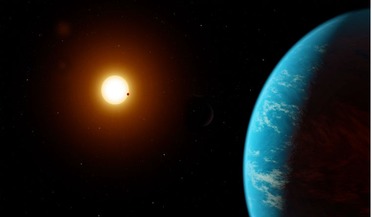 07 January 2019
Two new firsts for exoplanets found by TESS
07 January 2019
Two new firsts for exoplanets found by TESS
... longer orbital periods and indeed, new research from an international team of astronomers have found just that. Known as HD 21749b, TESS has found an exoplanet that takes 36 days to traverse its host star; this is the longest-period ...the find is that HD 21749b is dense, really dense. This heavy world is one of only three exoplanets to have been found that are this dense. Weighing in at nearly six grams per cubic centimetre (Earth for comparison...
 April 2019
Scanning the skies for exoplanets
April 2019
Scanning the skies for exoplanets
...space agency has ever sent into space, Kepler. During its lifetime, Kepler observed an astonishing 530,506 stars and found over 2660 exoplanets. Its discoveries revolutionised the field of exoplanet studies as it revealed a plethora of ... their host stars in 13 days or less; these are considered short orbital period exoplanets. Conversely, Kepler was adept at finding exoplanets with orbital periods from 10 days up to a few hundred days, a feature ...
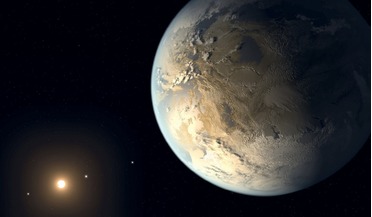 August 2018
Exoplanet census promises radical discoveries
August 2018
Exoplanet census promises radical discoveries
... police radar guns to detect speeding cars. Figure 1: The sensitivity regions of the Kepler transit survey (in red) and the WFIRST exoplanet microlensing survey (in blue) are compared to the orbits of the planets in our ... planet or star in systems with more than one host star. The combination of the WFIRST exoplanet microlensing survey and Kepler’s transit survey will provide a complete statistical census of planets at all separations. This is the...
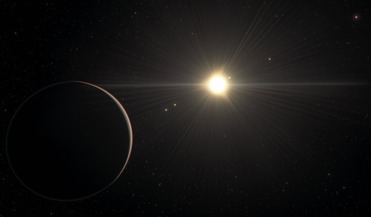 25 January 2021
Unique six-exoplanet system challenges theories of how planets form
25 January 2021
Unique six-exoplanet system challenges theories of how planets form
... the brightest dwarf stars. To date, the planet hunter has found 98 confirmed exoplanets and 2453 candidates waiting to be verified. Exoplanet candidates which appear the most promising are put into the TESS Objects...evolution of planetary systems,” says Leleu. Although none of the six exoplanets found lies in the star's habitable zone – an area in which liquid water might be found on a planet’s surface – the researchers suggest that by following ...
 November 2018
How many people does it take to colonise an exoplanet?
November 2018
How many people does it take to colonise an exoplanet?
...surface. Located at 4.2 light years (40,000 billion km), Proxima Centauri b is almost an ideal destination - as far as exoplanets go. But while this distance may be small by astronomical standards, it remains utterly vast on the human scale. The...choice of breeding rules HERITAGE allows us to reconsider the findings of Moore and Smith. We found that Moore’s overly-strict social engineering rules drive the population to extinction for a small ...
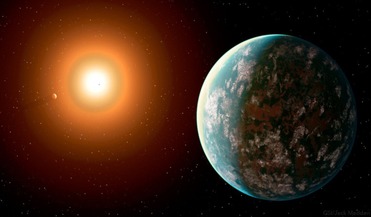 02 August 2019
Newly found exoplanet may be suitable for life
02 August 2019
Newly found exoplanet may be suitable for life
... Sun. Without accounting for the additional warming effects of a possible atmosphere, this gives this piping hot exoplanet an equilibrium temperature of around (254 degrees Celsius (490 degrees Fahrenheit). Its companion, GJ 357 c, ... three different types of atmosphere for GJ 357 d to see which could sustain surface habitability. The team found that if GJ 357 d has a geological cycle that regulates carbon dioxide concentration like on Earth, then ...
 14 November 2018
Super-Earth exoplanet found around closest single star to the Sun
14 November 2018
Super-Earth exoplanet found around closest single star to the Sun
... to spring up all over the place and one has just been found only six light years away, making it the second-closest known exoplanet to Earth. The planet’s host star is Barnard’s star, a very low-mass... b receives the equivalent of only 2 percent of the energy the Earth receives from the Sun, making the exoplanet a frigid and not so nice place to live where temperatures could reach as low as -170 degrees celsius. The...
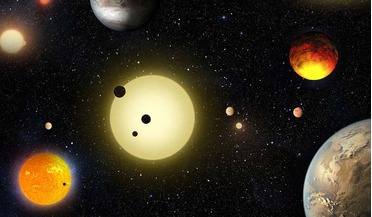 11 May 2016
Kepler scientists announce a major increase in confirmed exoplanet numbers
11 May 2016
Kepler scientists announce a major increase in confirmed exoplanet numbers
... day, 7 days a week, 365 days a year looking for the tell-tale sign of a would be exoplanet. The technique Kepler uses is known as the transit method and it works by measuring the dip in star light as a planet passes... cannot be claimed as true exoplanet discoveries. In this latest announcement, Kepler scientists have doubled the number of known exoplanets smaller than the size of Neptune in our own Solar System and found over a hundred that are ...
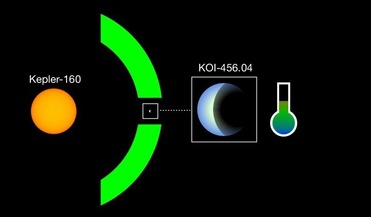 05 June 2020
Exciting exoplanet find around sun-like star
05 June 2020
Exciting exoplanet find around sun-like star
...is not new. It was discovered around ten years ago, followed by the confirmation of two exoplanets, called Kepler-160b and Kepler-160c, four years later. Both of these planets though are substantially bigger than Earth and ... scientists suspected that a third planet might be hiding in the system. After searching through archival Kepler data of Kepler-160, the team found not just one additional planet, but another as well; one of which – KOI-456.0 ...